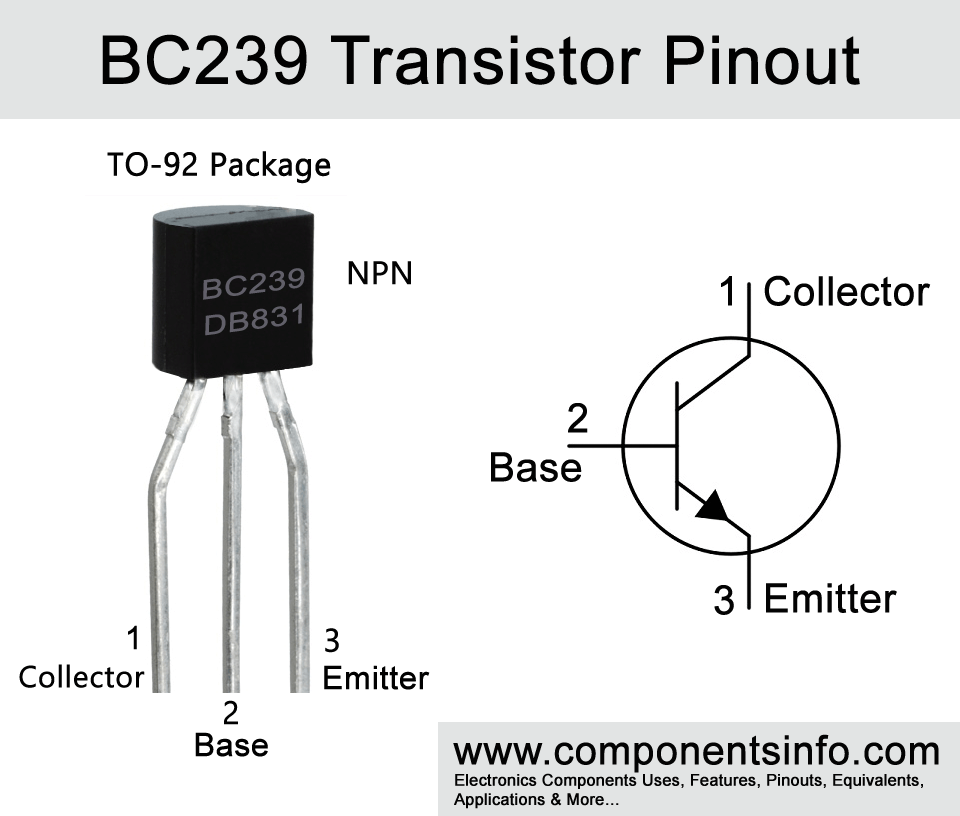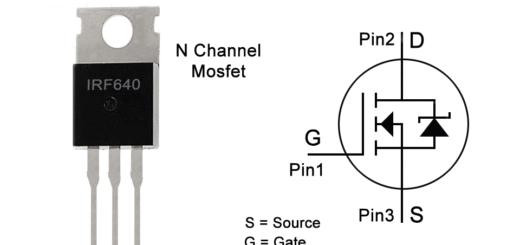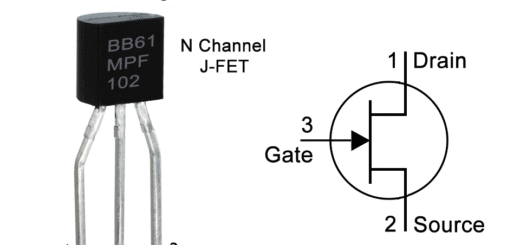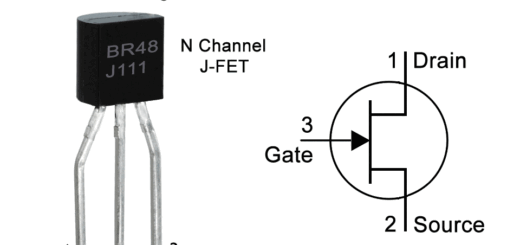BC239 Transistor Pinout, Equivalent, Uses, Features, Where and How to Use and Other Related Details
BC239 is a NPN bipolar junction transistor available in TO-92 package. Today we are going to understand BC239 transistor pinout, equivalent, uses, features, where and how to use and other related details of this device.
Absolute Maximum Ratings:
- Package Type: TO-92
- Transistor Type: NPN
- Max Collector Current(IC): 100mA
- Max Collector-Emitter Voltage (VCEO): 30V
- Max Emitter-Base Voltage (VEBO): 5V
- Max Collector Power Dissipation (Pc): 500mW
- Max Transition Frequency (fT): 130 MHz
- Minimum & Maximum DC Current Gain (hFE): 120 – 800
- Max Storage & Operating temperature Should Be: -55 to +150 Centigrade
PNP Complementary:
PNP Complementary of BC239 is BC309
Replacement and Equivalent:
BC546, BC547, BD548, BD549, BC550
BC239 Transistor Explained / Description:
BC239 is a BJT transistor designed to be used in amplifier and switching applications. The transistor is having quite good electrical characteristics due to which it can be used in wide variety of applications. The good features of the transistor are the DC current gain of 120 to 800, minimum transition frequency of 150MHz and maximum is 250MHz (Some manufacturers also make it up to 280MHz), and maximum noise figure of 4dB.
Now looking at the absolute maximum ratings of the transistor max collector current is 100mA, max collector-emitter voltage is 30V, max emitter-base voltage is 5V and max collector power dissipation is 500 milliwatt.
The transistor is designed to be used in amplifiers and switching applications but due to its good electrical characteristics, it can also be used in RF circuits, signal amplification circuits, circuits where low noise and high gain transistors are required, etc.
BC239 is available in three different versions according to its DC current gain or hFE so you can select how much gain requirements are in your circuit. The DC current gain can be determined by the alphabet after the part number. If that alphabet is “A” then the hFE will be 120 to 220, if “B” then its hFE will be 180 to 460 and if “C” then its hFE will be 380 to 800.
Where We Can Use it & How to Use:
BC239 transistor is designed to be used in amplifiers and switching applications. But due to its good features and electrical characteristics, it can also be used in variety of other applications such as RF circuits, signal amplification circuits, low noise circuits, etc. A detailed list of its applications can be found below. It is a BJT transistor so the using procedure is same as you use any other BJT transistor.
Applications:
Sensor Circuits
Audio Preamplifier Circuits
Signal Amplification Circuits
Audio Amplifier Stages
Darlington Pairs
Radio Circuits
Transmitter Circuits
Switching Loads under 100mA
Safe Operating Guidelines:
Here are the safe operating guidelines of the transistor.
- Always use the transistor 20% below from its absolute maximum ratings.
- The maximum collector-emitter voltage is 30V but according to the above 20% rule we will not drive load of more than 24V.
- The same applied to the collector current use, we will not drive load of more than 80mA.
- Do not expose to temperatures below -55°C and above 150°C.
- The maximum storage temperature is from -55°C to 150°C, so we have to save the transistor from temperature below and above these limits, and the junction temperature should be under 150°C.
Datasheet:
To download the datasheet just copy and paste the below link in your browser.
https://media.digikey.com/pdf/Data%20Sheets/Fairchild%20PDFs/BC23x.pdf



